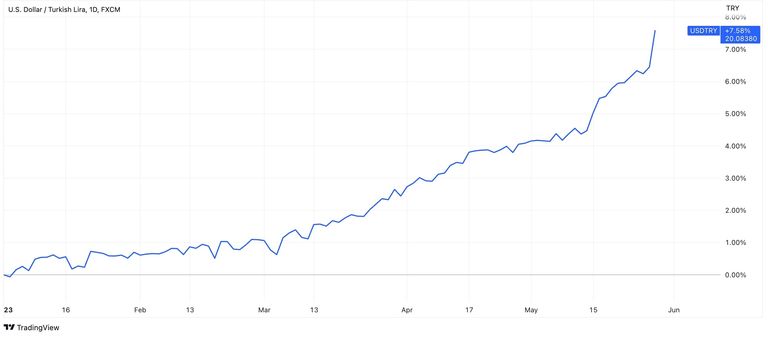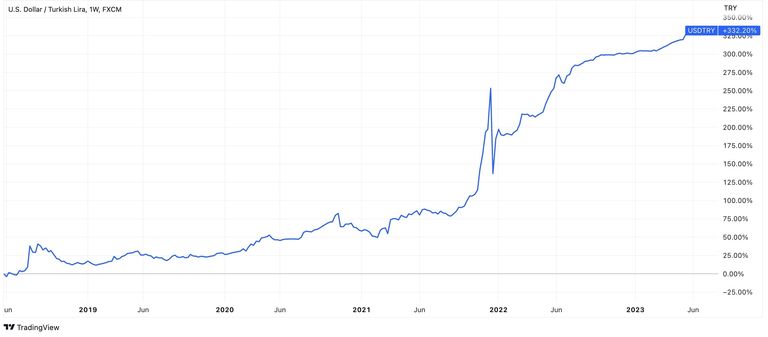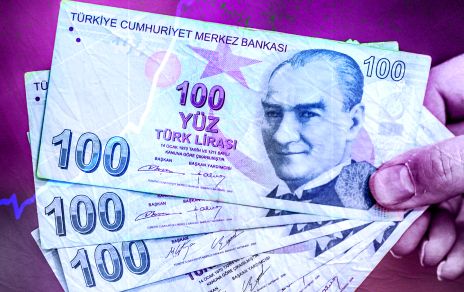When there were no elections in Turkey, the lira was falling down. When the elections were going on, the lira was falling down. When the elections were over, the lira… continued to fall down, of course. Let’s try to investigate – if further developments are still predictable and what we can generally wait for from the Turkish currency.
The TRY reached the historic mark recently – the recent exchange rate surpassed 20 liras for $1, although the USD/TRY chart shows a relatively modest 7% decline over six months. Maybe it’s not so terrible?

Actually, it is even more macabre. A closer look reveals a staggering 332% increase of the US Dollar against the lira in the past five years. By the way, do you know that multiple movements in the Forex and stock markets can be forecasted? In order to do that, you should use the economic calendar, which includes all the major economic events.

Recep Erdogan has won the presidential election in Turkey and will continue to be president for the next 5 years. It’s significant for the Forex market because Erdogan’s approach to economic policy is specific. Whilst most of the emerged and emerging countries raise interest rates to fight inflation, Turkey tries to beat it by keeping low-level rates and stimulating the economic activity of the population. Nevertheless, Turkey faced an inflation rate of over 60% in 2022.
Therefore, Erdogan's win has further accelerated the depreciation of the lira as investors anticipate the continuation of such policies. Since 2021, the key rate in Turkey has steadily declined.
All this is accompanied by scaled currency interventions and various seemingly new measures to support the lira (yep, the drop is still as big as it could be). As a result, such actions depleted government funds and led to a mass departure of foreign investors from the unreliable Turkish market.
If everything continues in the same vein, the crisis might become more dangerous, with an even higher price levels and complete depletion of foreign exchange reserves. Pessimistic scenarios suggest that the USD/TRY rate could reach 28-30 by the end of 2023.
So, is there anything that can stop this from happening? Well, any indications of a correction in economic policy may lead to the lira’s growth (at the least, in the short term). Plus, the summer tourist season might temporarily boost the lira's value.
Remember that you need to be especially careful if you work with such a currency pair as volatile as USD/TRY. That’s why you should conduct thorough analysis before making any trades – even if experts are sure of their forecasts.

